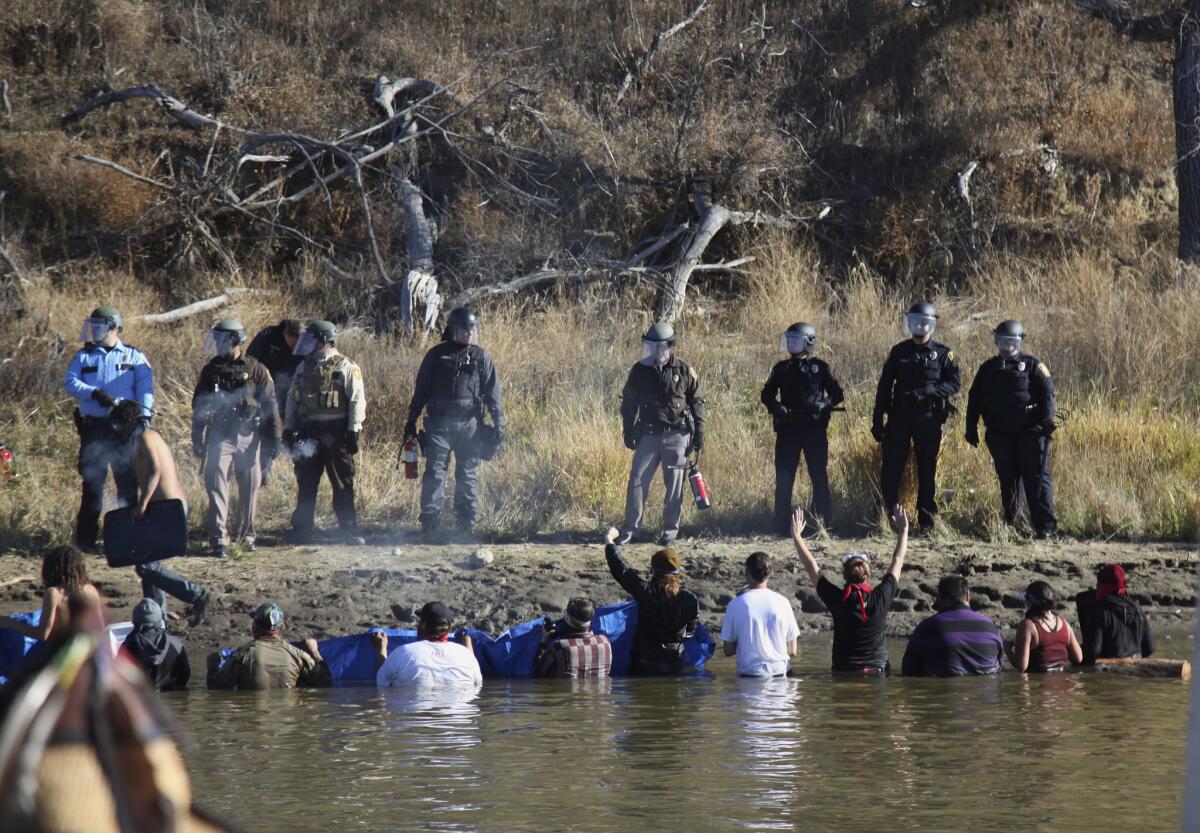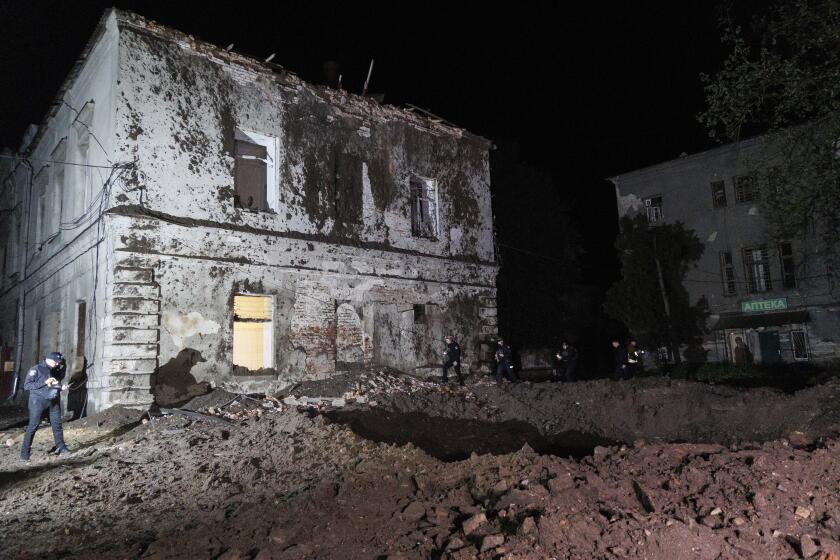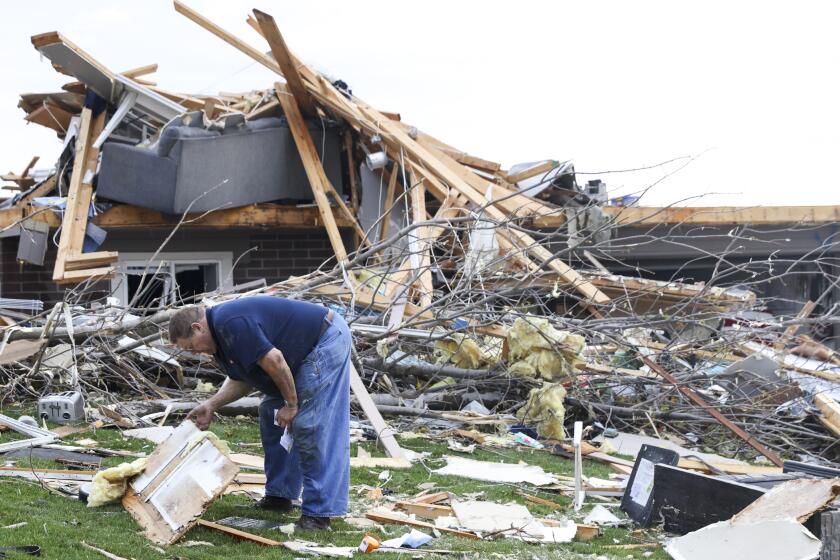There’s a reason few even knew the Dakota Access pipeline was being built

The bitter fight over the Dakota Access Pipeline seemed to erupt out of nowhere this summer, and there is a good explanation for that: Relatively few people knew the pipeline was being built.
In the summer of 2014, the pipeline was merely a concept, a major crude oil transport project whose developers had not yet sought permits. Barely 18 months later, it was under construction.
That might seem like a quick turnaround for a 1,170-mile pipeline that would transport half a million barrels of crude oil a day, span four states, cross water and wetlands hundreds of times, veer near historic Native American sites, cut through farms and take private land by eminent domain.
But there is a reason things moved quickly, and critics say it highlights a serious but little understood flaw in the way big oil pipelines get built.
Unlike many other major energy projects — drill rigs off the coast of Alaska, large wind farms in the West, natural gas pipelines — domestic oil pipelines built largely on private land often do not require an overarching permit from the federal government, even those as sprawling and ambitious as the Dakota Access.
This is what happens instead: The Army Corps of Engineers, the federal agency that issues permits for construction on and near waterways, often does not assess major pipeline projects as major pipeline projects at all.
Rather than broadly examining the impact a major pipeline could have across its length, looking at cumulative effects on water, air quality, land and animal species or the climate-changing emissions a pipeline might enable, the Corps typically assesses big pipelines as a series of much smaller ones, sometimes hundreds of smaller ones — breaking them up into segments to be reviewed at specific water and wetland locations.
This piecemeal approach falls under a process called Nationwide Permit 12.
Critics point to the language of the law and express exasperation at the Corps’ interpretation of it. Nationwide Permit 12 allows for “activities required for the construction, maintenance, repair, and removal of utility lines and associated facilities in waters of the United States, provided the activity does not result in the loss of greater than 1/2-acre of waters of the United States for each single and complete project.”
How, they ask, could the Corps view a pipeline’s every impact as a “single and complete project” if it’s only being examined piece by piece.
“It’s in violation with, if not the law itself, certainly the spirit of the law,” said Jim Murphy, a lawyer for the National Wildlife Federation who specializes in the Clean Water Act and other federal regulations.
The Corps, in response, pointed to its website, which states its goal in using this method is to reduce paperwork on projects that will have “minimal” impact on the environment. In the case of Dakota Access, it said it “may only regulate the areas where the pipeline crosses waters of the United States or federal real property interests acquired and managed by the Corps for flood control and navigation projects.”
Treating a project this way spares it and the Corps layers of stricter scrutiny, including wider public review and potentially analysis by federal scientists through the National Environmental Policy Act, the Endangered Species Act and other regulatory measures.
President Obama, to the consternation of many environmentalists, has boasted at times of the efficiency of pipeline construction under his administration.
“We’ve added enough new oil and gas pipeline to encircle the Earth and then some,” the president said in a speech in Cushing, Okla., in March 2012.
He went on, making an election-year promise to be a fossil-fuel friendly executive.
“As long as I’m president,” he said, “we’re going to keep on encouraging oil development and infrastructure, and we’re going to do it in a way that protects the health and safety of the American people.”
There are exceptions, however. The Keystone XL pipeline, which would have transported crude from Canada’s oil sands to Nebraska, triggered a State Department analysis that ultimately left the final decision to the president.
With the Paris climate conference approaching, President Obama rejected the Keystone XL pipeline, in part to send a signal of U.S. resolve to nurture renewable energy.
The decision was a departure for Obama. In that same Cushing speech, Obama vowed that a different part of the Keystone system, its southern leg, the nearly 500-mile Gulf Coast pipeline, would be permitted and fast-tracked under Nationwide Permit 12.
Now, however, Nationwide Permit 12 is stirring a new level of opposition. So far, courts have upheld its use, but the policy is revised every five years, and environmental groups — many that paid little attention before Keystone XL and the boom in domestic oil production — have zeroed in.
“Oil companies have been using this antiquated fast-track permit process that was not designed to properly address the issues of mega-projects such as the Dakota Access pipeline,” Dallas Goldtooth, of the Indigenous Environmental Network, wrote this summer, when his group and others submitted more than 35,000 comments during the formal review period.
“Meanwhile, tribal rights to consultation have been trampled and Big Oil is allowed to put our waters, air and land at immense risk,” Goldtooth wrote.
The increasingly tense protests over Dakota Access have largely focused on tribal concerns but protesters like Goldtooth have also drawn attention to Nationwide Permit 12. The Obama administration did so as well, if inadvertently, with its unusual decision in September to withhold a final permit to allow the Dakota Access to cross a small portion of federal land and Lake Oahe, a dammed section of the federally regulated Missouri River that provides water for the Standing Rock Sioux.
The administration acted just minutes after a federal judge denied a request by the Standing Rock Sioux to halt construction on the pipeline.
In his ruling, U.S. District Judge James E. Boasberg in Washington, D.C., referring to the way the Corps usually permits such projects, said the pipeline “needs almost no federal permitting of any kind because 99% of its route traverses private land.”
The crossing at Lake Oahe and the federal land next to it is not private, giving the administration more leverage to invoke federal authority than it has elsewhere along the route.
Energy Transfer Partners, the Texas company overseeing the pipeline’s construction, has accused the administration of disrupting a $3.8-billion project it says is 75% complete and largely paid for.
But one of the wrinkles and risks of operating under Nationwide Permit 12 is that a company can choose to begin construction in certain areas of a project without having permits for all of it. In the past, that seemed safe to do. Now, because of the Native American protests, Energy Transfer Partners finds itself stuck on the banks of Lake Oahe.
ALSO
How Donald Trump put together such a strong showing in the presidential election results
Financial markets tumble amid Trump’s surprising election-night performance
Whatever happens, one things seems certain in Congress: continued partisan gridlock
More to Read
Start your day right
Sign up for Essential California for news, features and recommendations from the L.A. Times and beyond in your inbox six days a week.
You may occasionally receive promotional content from the Los Angeles Times.







